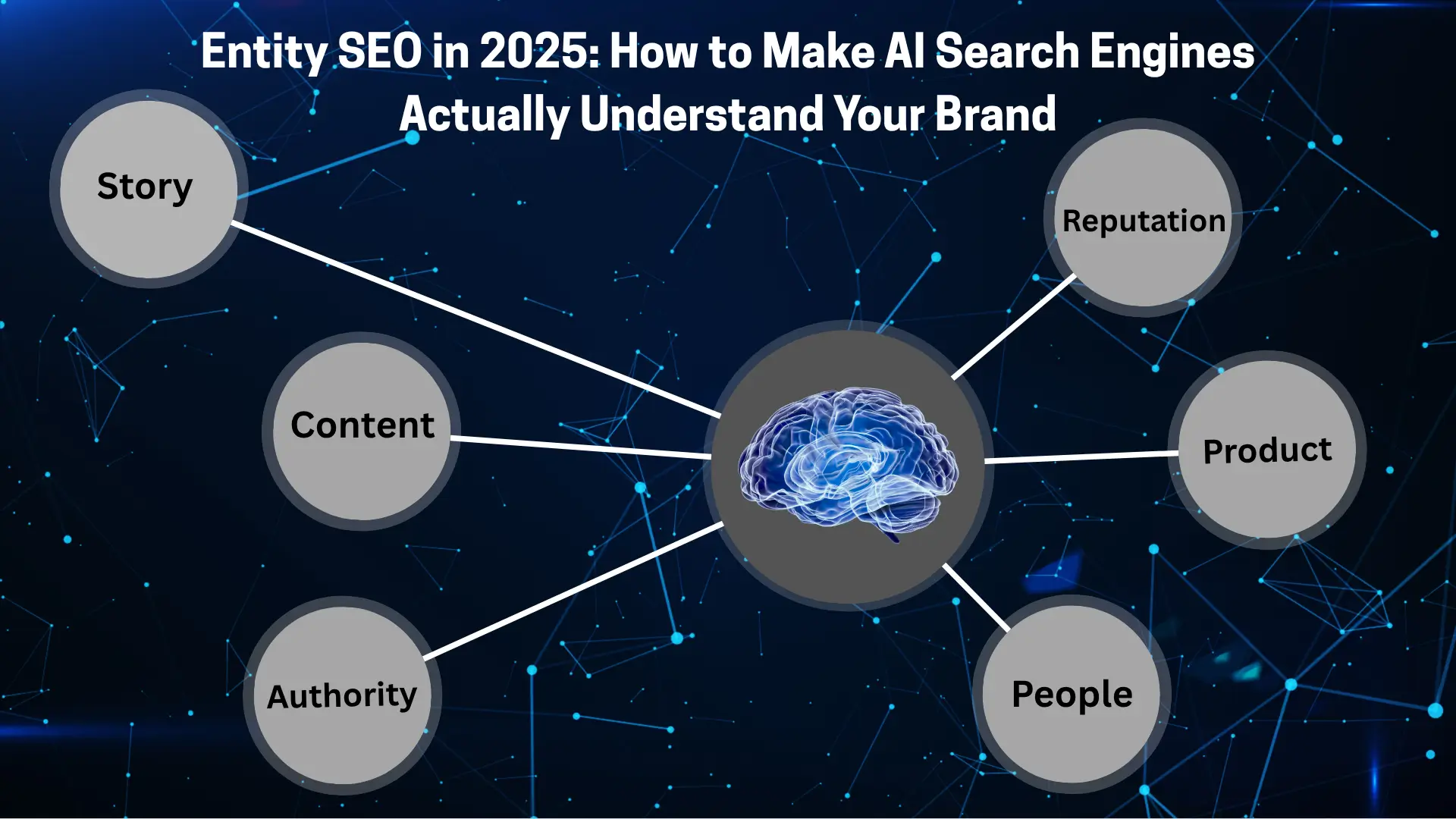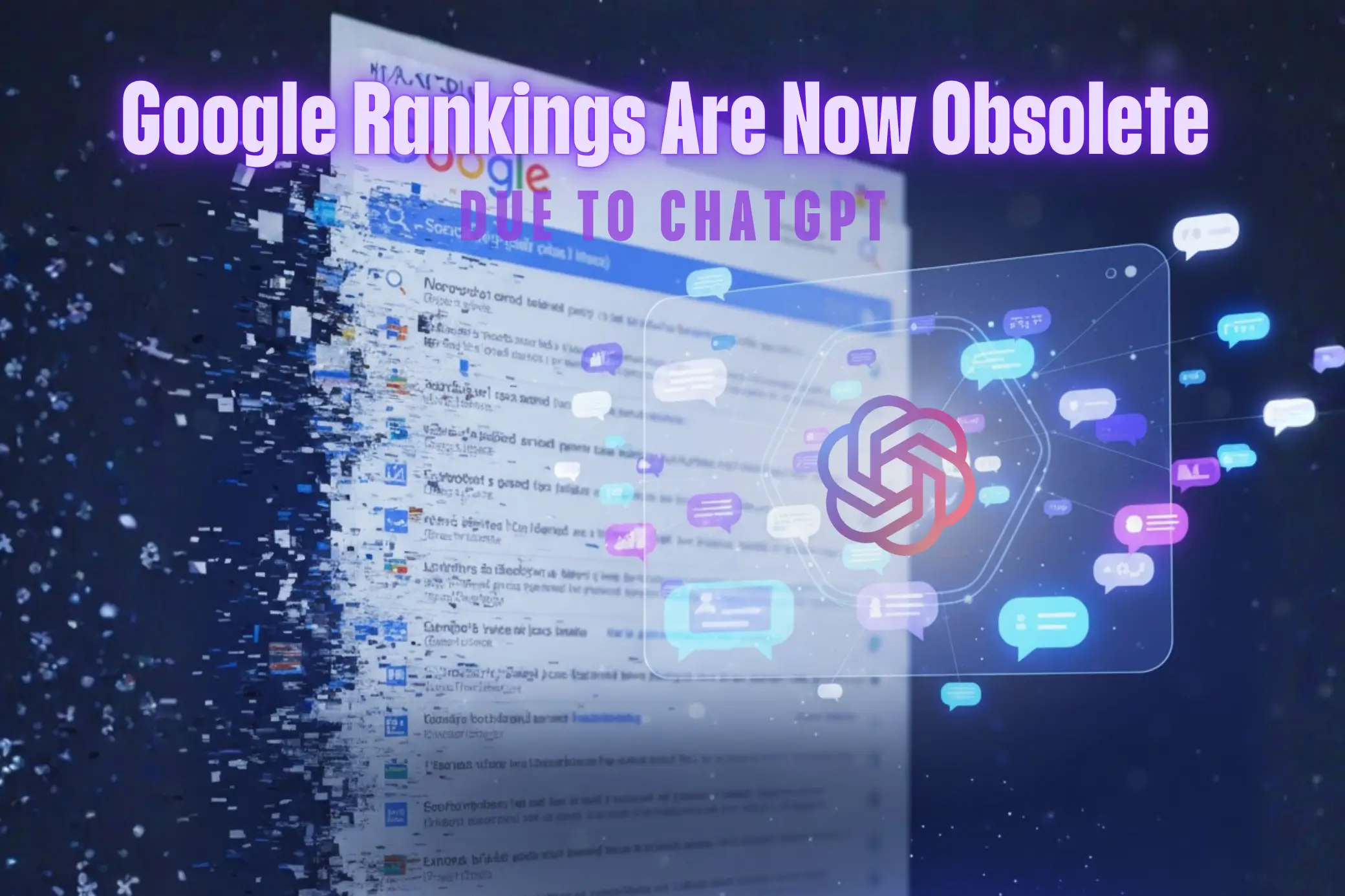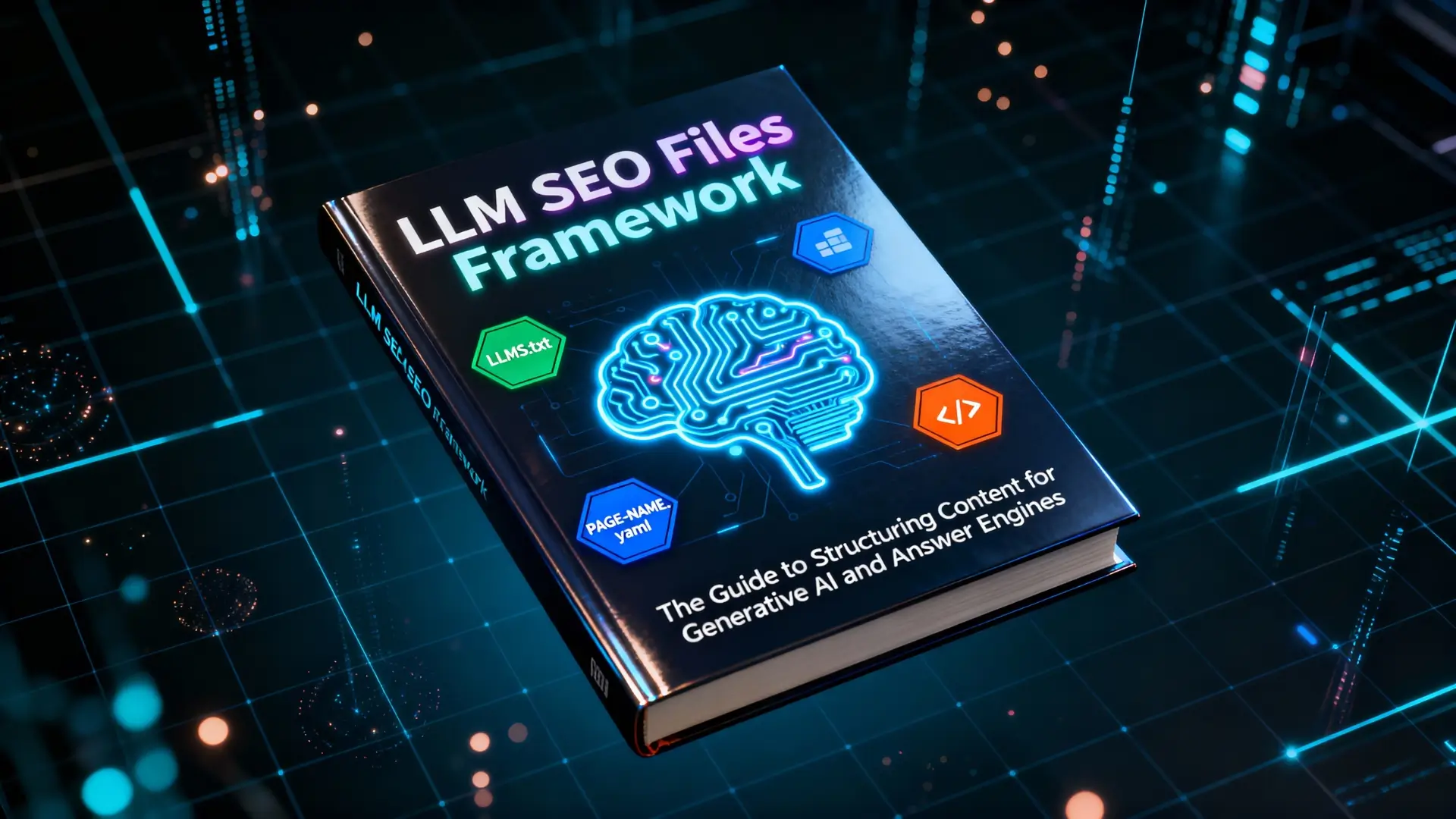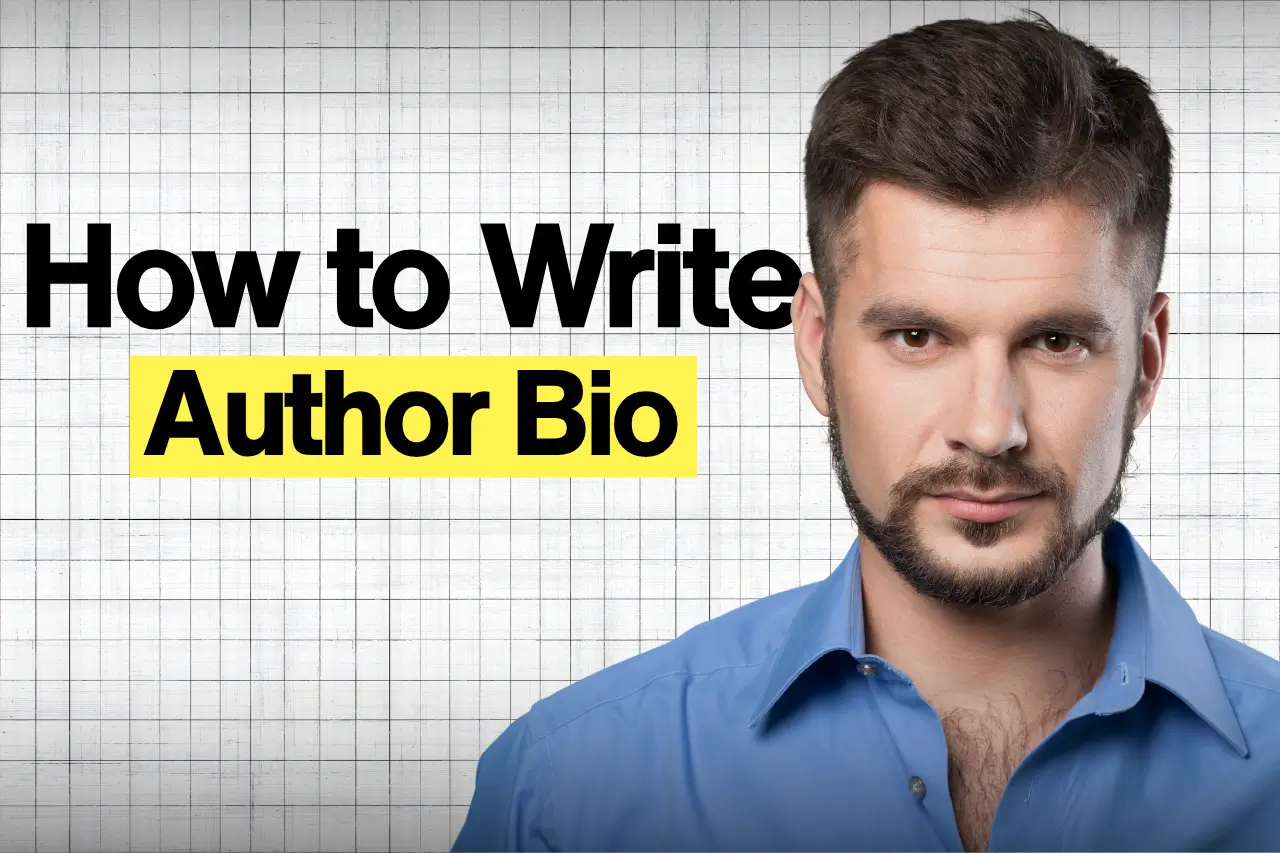Do you want your brand to truly stand out in search results, not just rank for a few random keywords, but be seen as a trusted authority in your niche? Imagine your brand being the go-to answer whenever someone searches for topics related to your products, services, or expertise. Sounds great, right?
Let me tell you what actually happened when I launched AI Monitor, now GetCito. I was pumped, great brand name, solid content, everything ready to go. Then reality hit me like a brick. Google thought "AI Monitor" was just someone searching for ways to monitor AI. Not a brand. Not a company. Just... words.
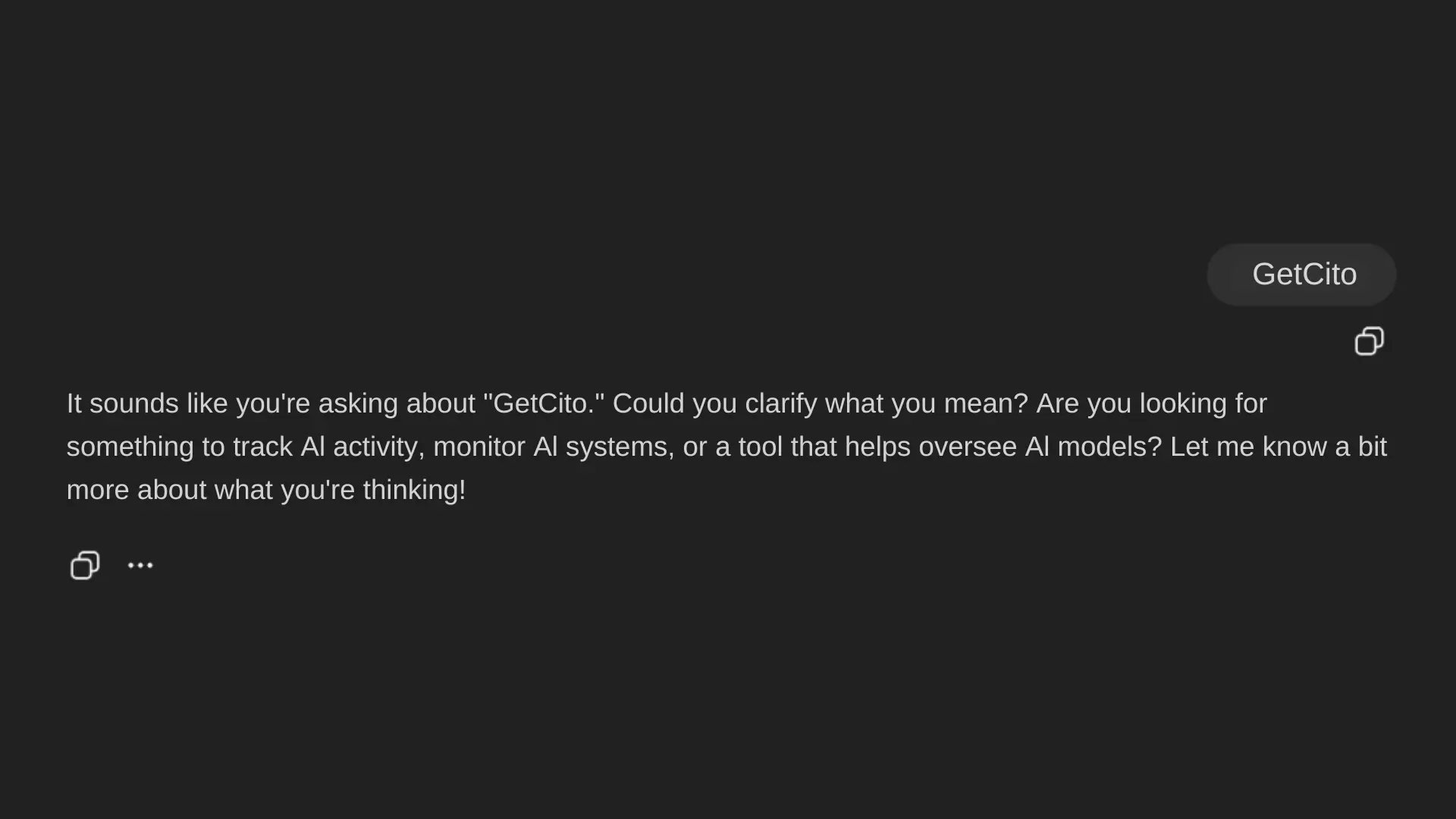
Look at this screenshot. This is exactly the problem. Someone searched for "AI Monitor," and the AI assistant didn't even recognize it as a brand. Instead, it's asking, "Do you mean something to track AI activity?" That's my company name, but the AI thinks it's just random words describing AI monitoring tools.
This is what happens without Entity SEO. Even when someone types your exact brand name, search engines and AI don't know you exist. You're not a business to them, you're just a phrase they're trying to interpret.
I'd watch my content rank, sure, but Google had no clue who we were. We were getting traffic for "AI monitoring tools" but zero recognition as AI Monitor, the actual brand. Meanwhile, my competitors were showing up in knowledge panels, getting featured snippets with their brand names, looking all official, while I was stuck being treated like a dictionary definition.
You know what's maddening? Writing amazing content that ranks well, but having Google still not understand you exist as a real entity. It's like being at a party where everyone hears you talking, but nobody knows your name.
So I rolled up my sleeves and got obsessed. Structured data, schema markup, building citations, creating content clusters, basically teaching Google "Hey, AI Monitor is a THING, not just keywords!" Month after month of tweaking, testing, and sometimes wanting to throw my laptop out the window.
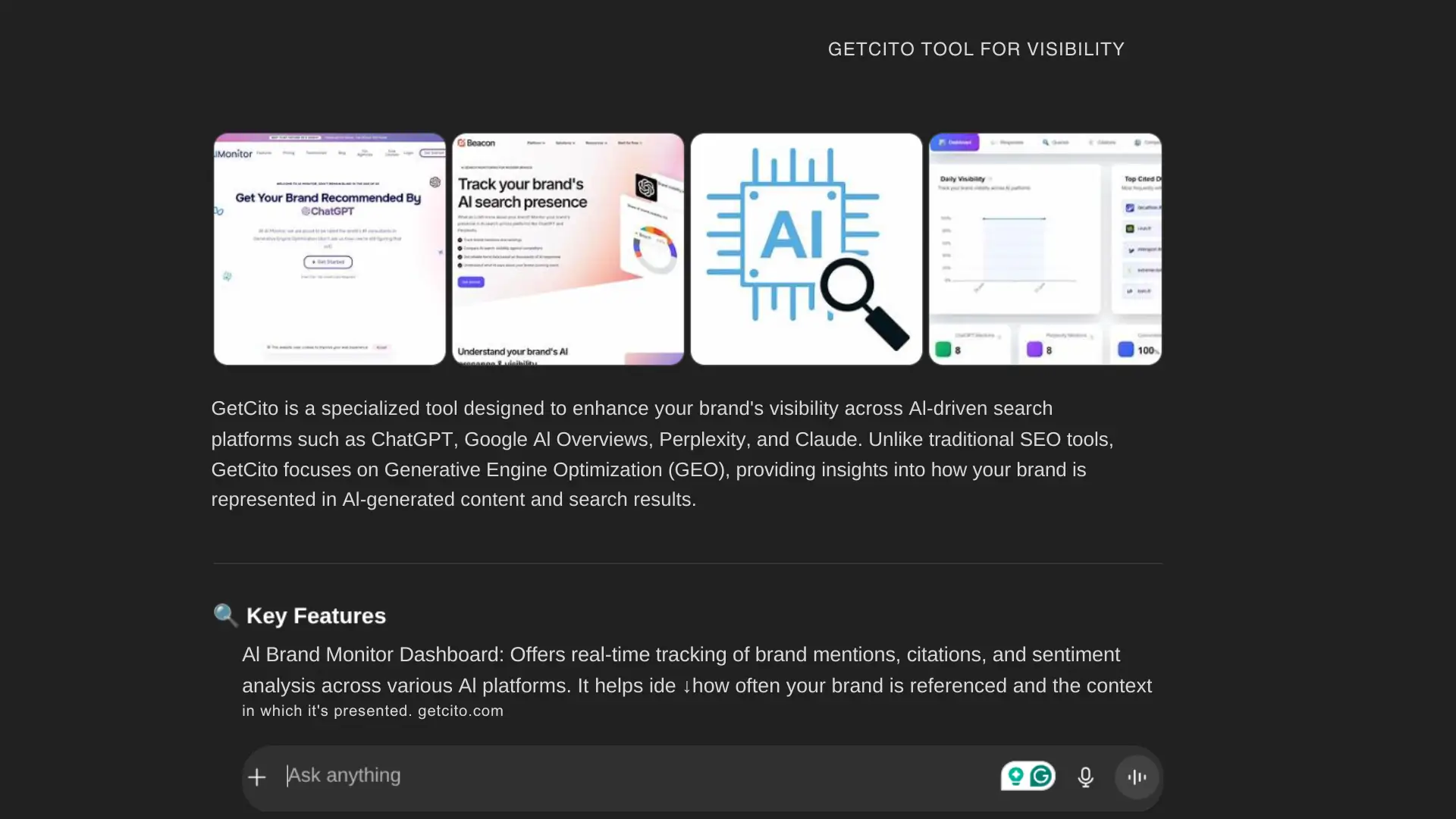
But here's where it gets good: it actually started working. Slowly, Google and AI engines started to get a hang of this. Our brand searches improved. We started appearing as a brand, not just matching keywords.
But we're not 100% there yet. Google can be stubborn, and AI? Still confused. Every answer was different one day; we'd appear correctly, the next day we'd vanish or get mixed up with something else. The inconsistency was the problem. If AI can't reliably understand and cite your brand, you're building on shaky ground.
That's when I made a big decision: rebrand to GetCito. A clearer name, stronger positioning, and a fresh start to implement everything I've learned about AI visibility. I'm applying all the techniques from scratch optimized for how AI actually works, not just how we think it should work.
The journey continues. I'll keep you posted on how the rebrand performs and what actually moves the needle in getting AI to cite us consistently.
In this guide, I'm sharing everything I learned from this journey, the mistakes, the wins, and the exact strategies that work. I'll show you what Entity SEO really is, why traditional keyword-focused SEO isn't enough anymore, and how to make search engines recognize your brand as a unique, authoritative entity.
This isn't just another SEO strategy; it's about making Google understand who you actually are. Ready to stop being invisible? Let's dive in!
What is Entity SEO?
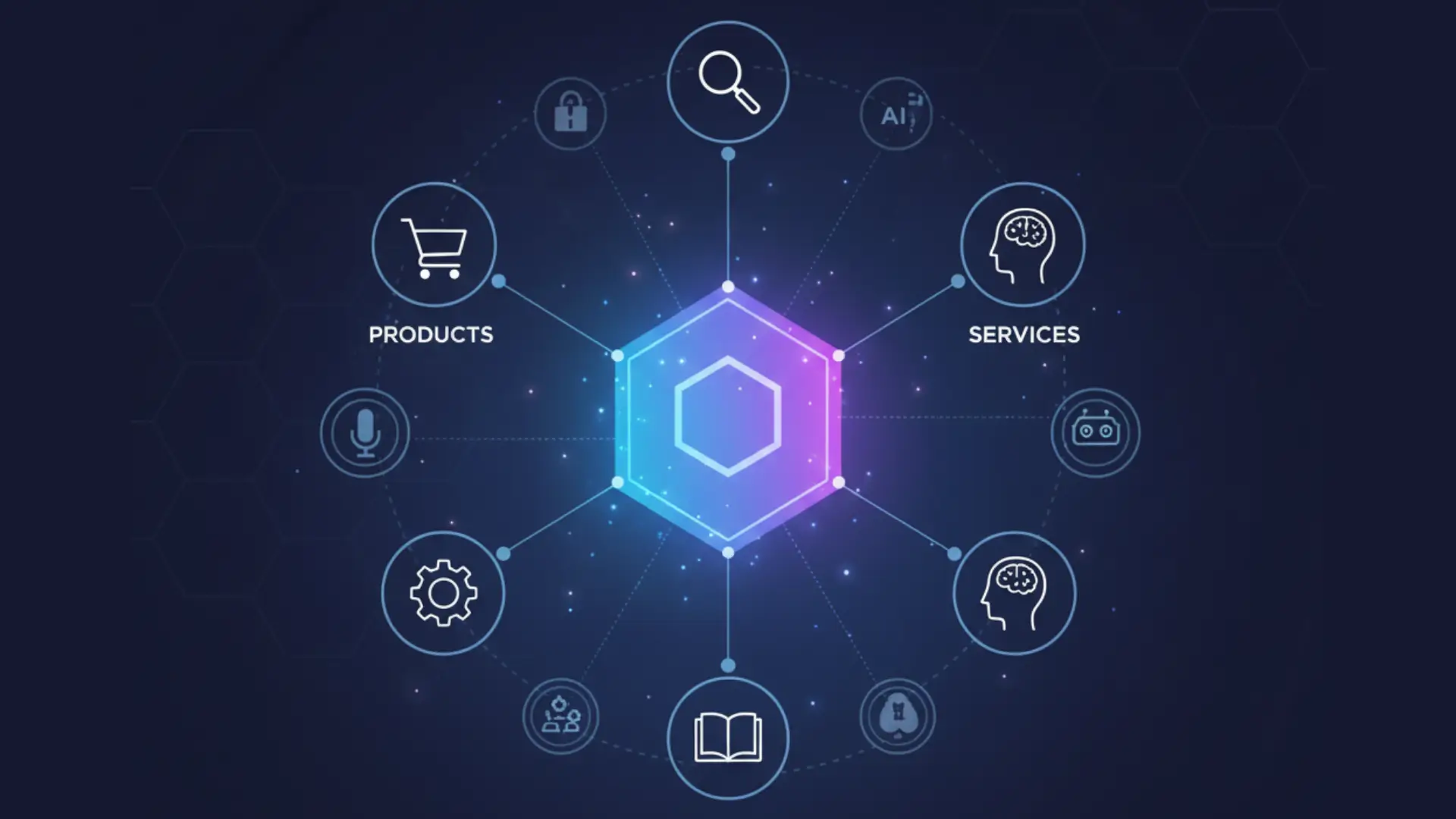
Entity SEO is the practice of optimizing your online presence as a distinct, recognizable "thing" in search engines rather than just targeting keywords. Instead of focusing on keyword strings like "best Italian restaurant NYC," Entity SEO establishes your business as a known entity, a specific restaurant with a name, location, menu, reviews, and connections to other entities like your neighborhood, cuisine type, and chef.
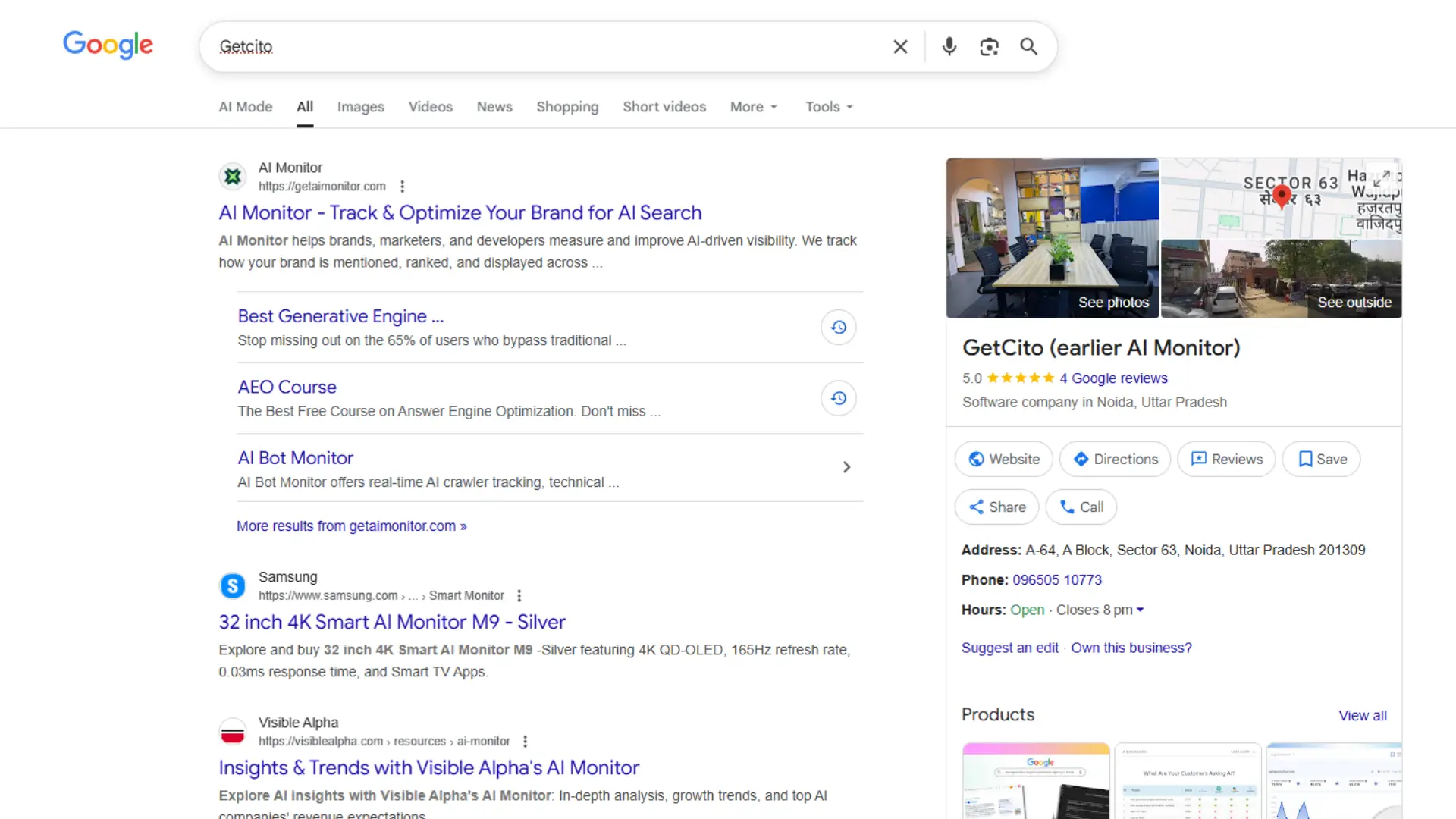
Google's Knowledge Graph stores information about millions of entities and their relationships. When you optimize for entities, you help Google understand not just what words are on your page, but what your content is actually about, whether that's your brand, products, people, or services. This leads to better search visibility, rich results like knowledge panels, and improved performance in voice and semantic search, where exact keyword matches matter less than meaning and context.
The core difference: Traditional SEO asks "what keywords should I rank for?" while Entity SEO asks "how can I help Google understand who I am and what I represent?"
Now you're thinking Entity SEO is just about Google? Let me correct that right away.
It's way bigger than that. Sure, Google gets all the attention with its Knowledge Graph and massive market share, but here's what I learned the hard way: when my brand wasn't recognized as an entity, it wasn't just Google that was clueless.
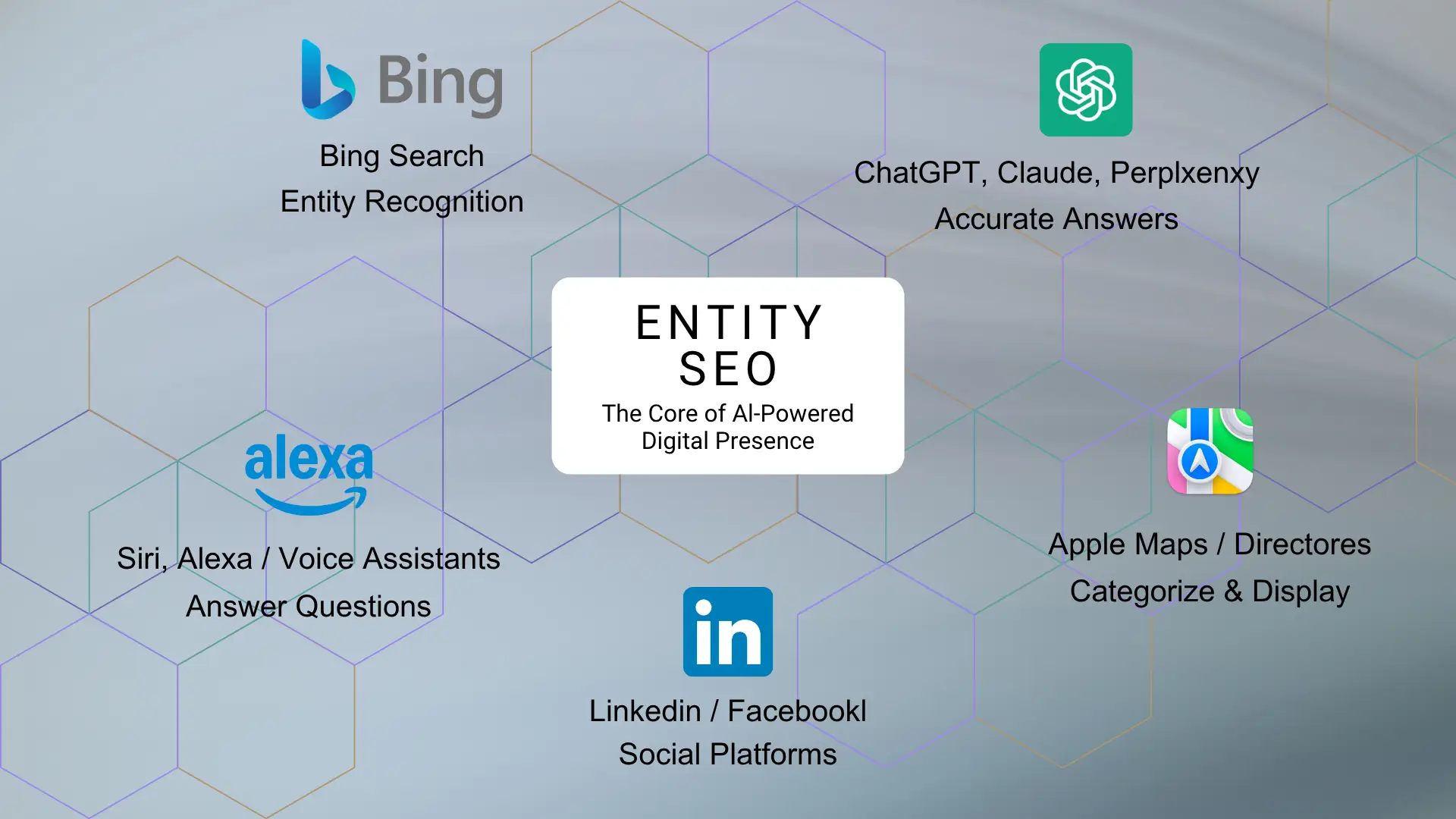
Bing didn't know AI Monitor existed. ChatGPT couldn't tell anyone about my company. Perplexity thought I was just describing AI monitoring concepts. Even LinkedIn treated my brand like random keywords instead of an actual business.
- Bing uses its Satori knowledge base for entity recognition
- ChatGPT, Claude, and Perplexity rely on entity relationships to provide accurate answers about brands and businesses
- Voice assistants (Siri, Alexa) pull entity data to answer questions about companies, people, and places
- Social platforms like LinkedIn and Facebook use entity recognition for business pages and connections
- Apple Maps and other directories need entity signals to properly categorize and display businesses
That screenshot I showed you? That was an AI assistant completely missing that AI Monitor is a real company. Not Google, just straight-up AI that should know better.
Here's what's actually happening: Every platform now thinks in entities:
- Instagram connects Starbucks locations, drinks, and posts automatically
- Siri knows Nike is a brand, not just a word
- ChatGPT understands the relationships between Tesla, Elon Musk, and EVs
- LinkedIn recognizes Microsoft as an entity linked to thousands of employees
We've shifted from a keyword web to a knowledge web. When you nail Entity SEO, you're not just teaching Google who you are; you're establishing your existence across every search engine, AI chatbot, voice assistant, and social platform out there.
Bottom line: Entity SEO is about being recognized as a real "thing" in the world's digital brain, not just ranking on one search engine. It's the difference between being an invisible word and being a known brand that matters.
What Makes Entity SEO Different
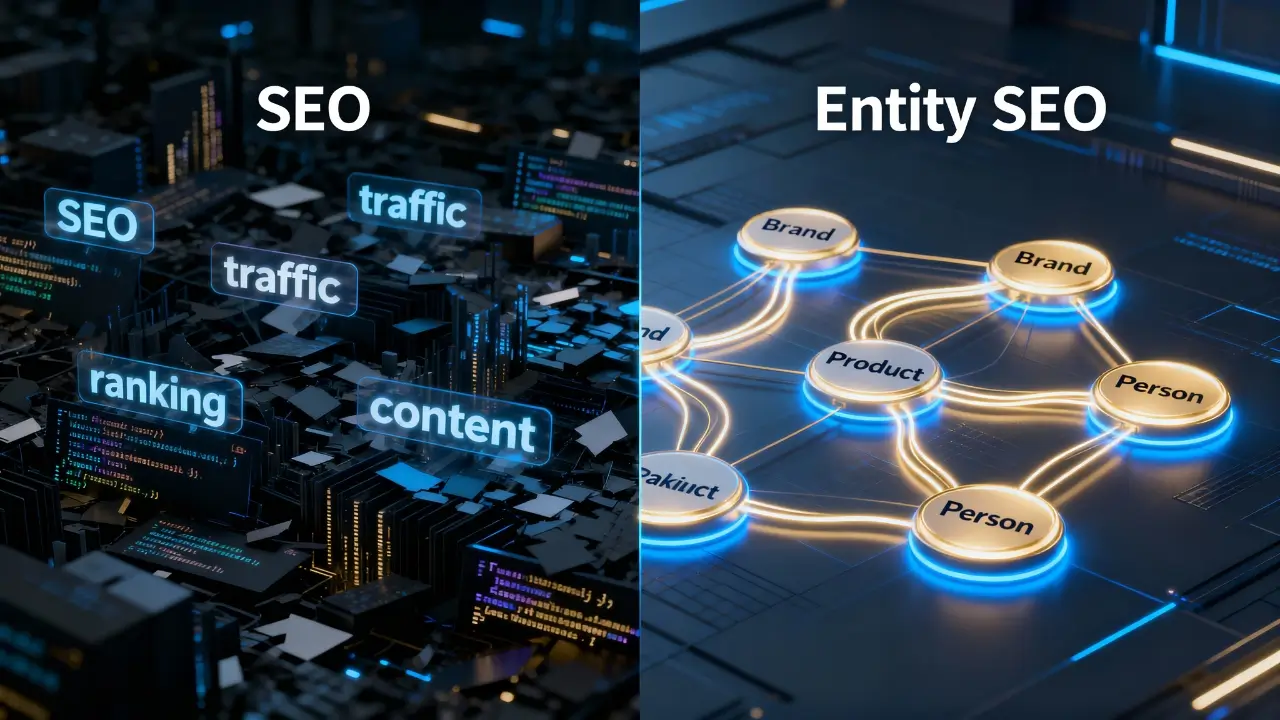
"Wait, if entities are so important, why didn't SEO focus on this before?"
Great question: Google couldn't understand entities until recently. Before 2012, Google was basically a matching system; you searched "red shoes," and it found pages with "red shoes." That's it. It couldn't understand that Nike was a company, Air Jordans were products, and Michael Jordan was a person connected to both.
Then AI changed everything.
When Google launched its Knowledge Graph in 2012 and started using AI and machine learning, search engines finally got smart enough to understand meaning, not just match words. Suddenly, Google knew the difference between Apple (fruit) and Apple (company).
Here's what this means for you right now:
Example:
- By May 2020, Google's Knowledge Graph contained 500 billion facts on 5 billion entities, and by 2024, it had grown to over 54 billion entities according to Kalicube's estimates
- Knowledge panels appear for roughly one-third of the 100 billion monthly searches Google handles.
- 8.4 billion voice assistants are now in use globally, more than the world's population, and voice searches rely entirely on entity understanding to work.
- Branded searches (entity-based) have CTRs of 34% in position one, compared to just 25% for non-branded searches.
- The Knowledge Graph market is exploding from $0.9 billion in 2023 to a projected $2.4 billion by 2028, with a 21.8% annual growth rate.
The brutal reality AI taught us: Keywords were never about us; they were about what people typed. When someone searches "AI monitoring tools," they don't want AI Monitor specifically. They want any tool. But when Google understands GetCito, formerly “AI Monitor”, as an entity, we show up for "AI performance tracking" even without those exact keywords, because Google knows that's what we do.
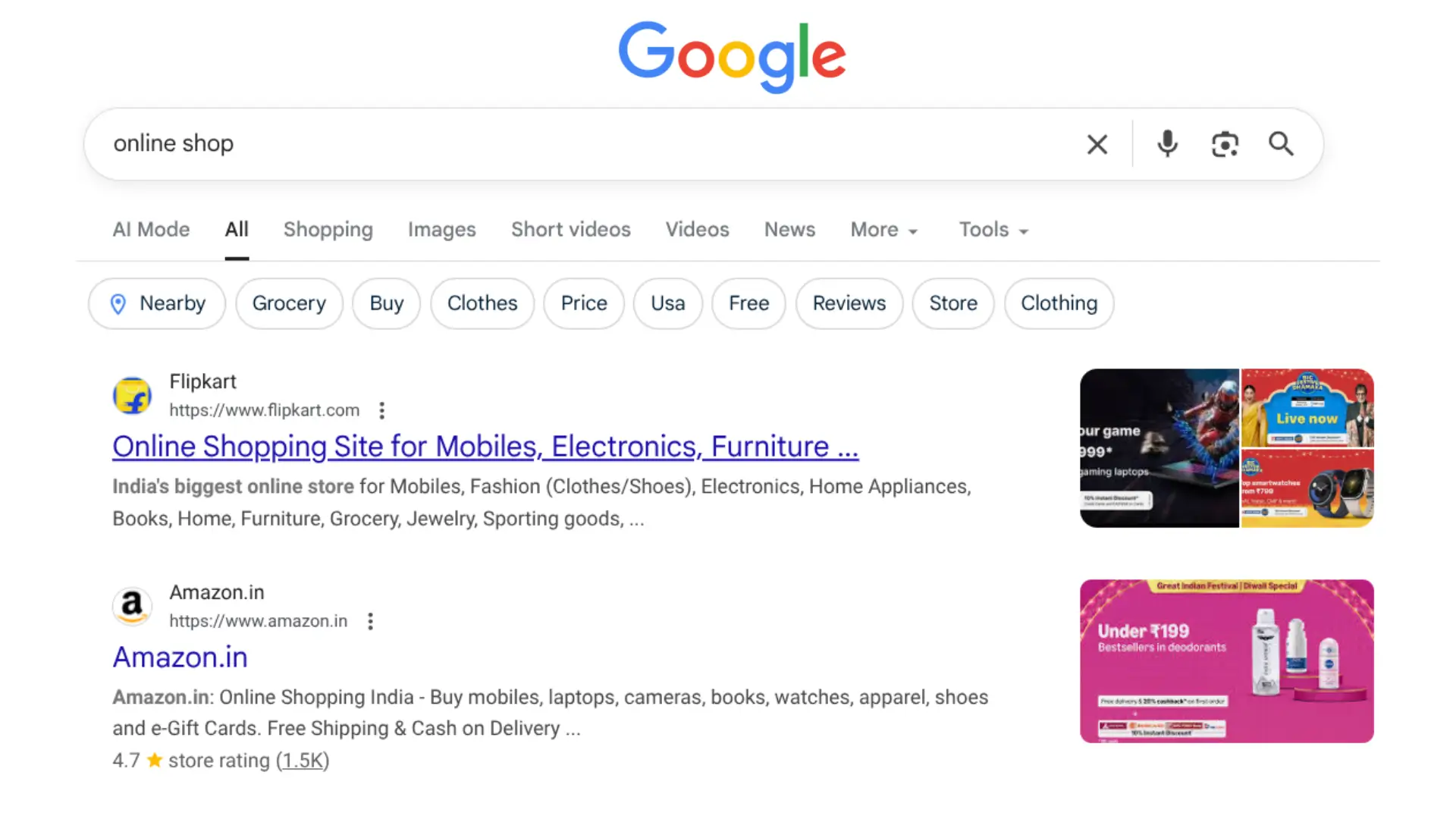
Think about Amazon. They rank for "online shop" without having that phrase plastered everywhere. Why? Google understands Amazon as an entity, what it is, what it does, and how it connects to e-commerce, delivery, and products.
The shift is simple:
- Old SEO: "How many times can I say 'AI monitoring'?"
- Entity SEO: "How can I prove GetCito, formerly “AI Monitor” is a legitimate company solving real problems?"
With AI now reading the web, it's not looking for keyword repetition. It's looking for proof you exist, matter, and connect to other real things. That's why Entity SEO isn't optional anymore; it's how modern search actually works.
For brands, this shift is huge. By optimizing for entities instead of just keywords, your content can be recognized as authoritative and relevant, increasing the chances of appearing in:
- Knowledge panels
- Rich snippets
- AI-generated answers
In short, AI and knowledge graphs are teaching search engines to think smarter, and brands that understand this early gain a serious advantage. By embracing Entity SEO, you’re positioning your brand to be seen, trusted, and recommended in the era of AI-powered search.
What is an Entity?
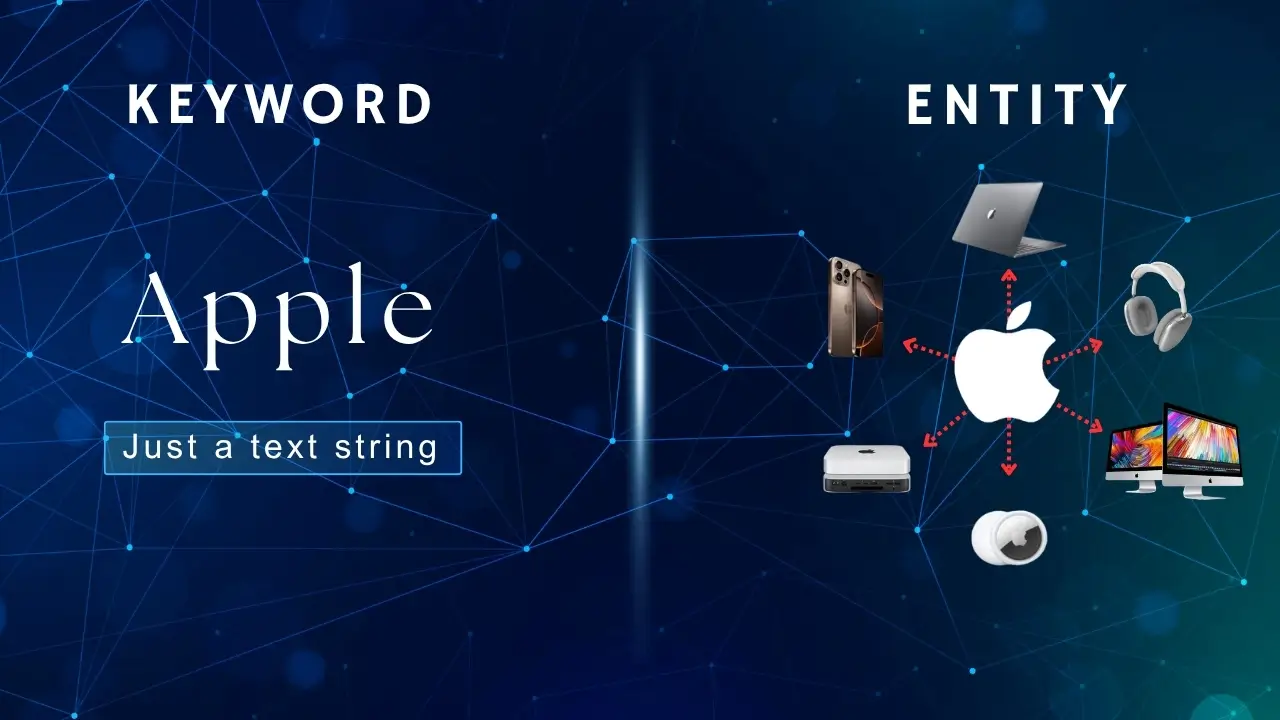
An entity is a unique, well-defined "thing" that exists in the real world, like a person, company, product, or place that search engines recognize as distinct from just keywords. Unlike keywords (which are just text strings), entities have specific attributes, relationships, and meaning.
For example, "Apple" as a keyword is just five letters, but Apple Inc. as an entity is a technology company with products, a CEO, headquarters, and connections to other entities. Search engines use entities to understand not just what words are on a page, but what the content is actually about, enabling them to provide more accurate results, knowledge panels, and voice search answers.
What makes something an entity?
It has an identity – Not just a name, but a specific, unique existence. "Nike" isn't just four letters; it's a company founded in 1964, headquartered in Oregon, making athletic wear.
It has attributes – Real properties and characteristics. Elon Musk isn't just a name; he's a person with a birthdate, nationality, companies he's founded, and specific roles he holds.
It has relationships – Connections to other entities. Tesla (entity) is connected to Elon Musk (entity), electric vehicles (entity category), and Fremont, California (entity - location).
The game-changing difference: Keywords are what people type. Entities are what people mean.
When someone searches "founder of Tesla," they're not looking for pages with those three words. They're looking for information about a specific person (entity) who has a specific relationship (founder) with a specific company (entity). Google now understands this. In the Extended Named Entity research paper, the author identifies around 160 entity types.
Common types of entities:
- People – CEOs, authors, celebrities, historical figures
- Organizations – Companies, universities, government agencies
- Places – Cities, landmarks, stores, restaurants
- Products – iPhone 15, Toyota Camry, specific software tools
- Events – World Cup 2022, Black Friday, specific conferences
- Concepts – Artificial intelligence, sustainability, democracy
For my brand Entity SEO: "How can I prove GetCito, formerly “AI Monitor” is a , becoming an entity meant Google stopped seeing us as random words about "monitoring AI" and started recognizing us as an actual company with products, team members, office locations, and customers. That's when everything changed.
Bottom line: Entities are the difference between Google thinking you're talking about something and Google knowing you are something.
Entities vs Keywords
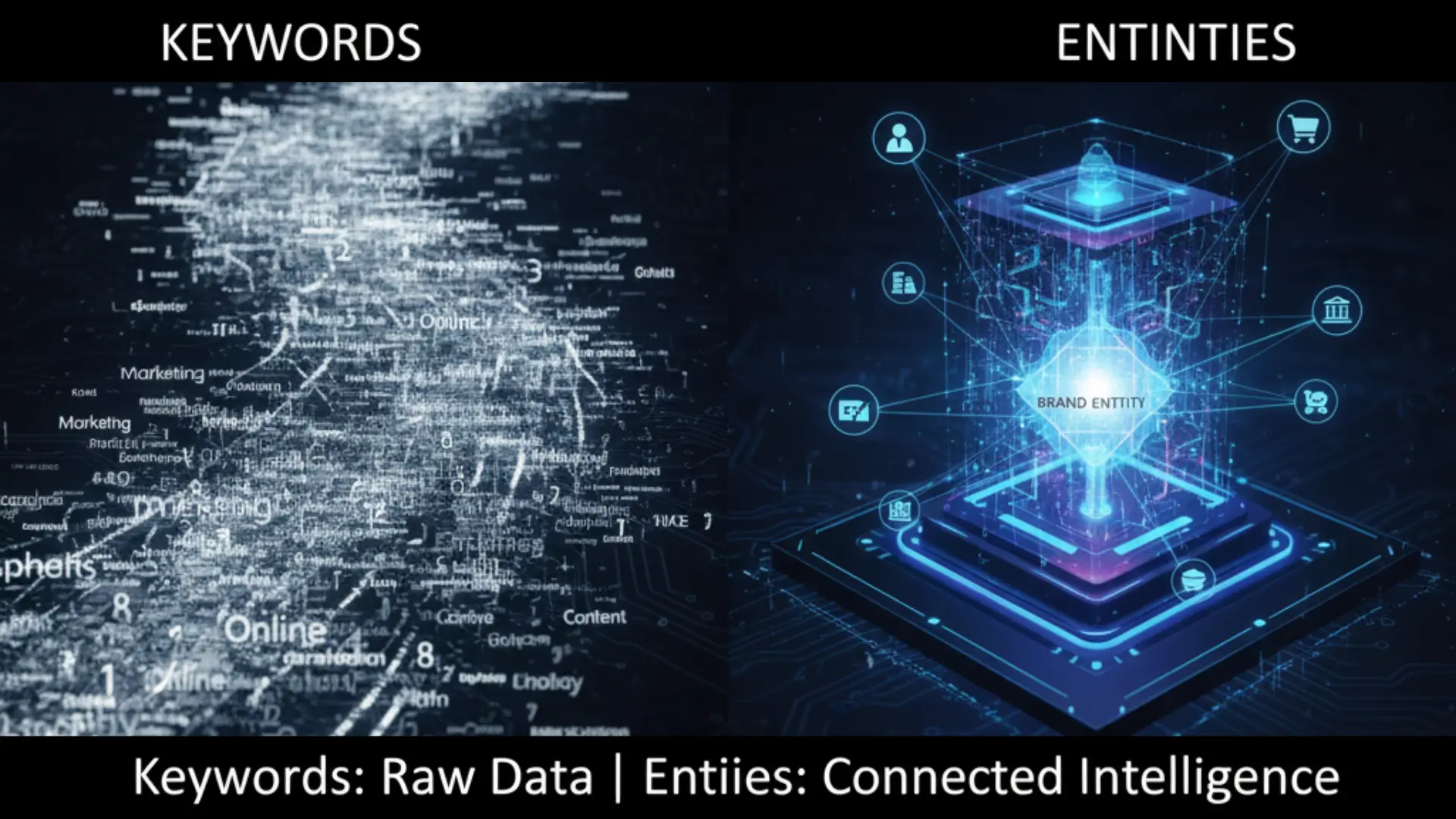
For months, I was obsessed with ranking for “AI monitoring tools,” tracking rankings, tweaking keyword density, the whole nine yards. Then I discovered entities, and realized I'd been playing checkers while Google was playing 3D chess.
Keywords are what people type. Entities are what things ARE.
Here's what blew my mind about the difference:
Language Independence
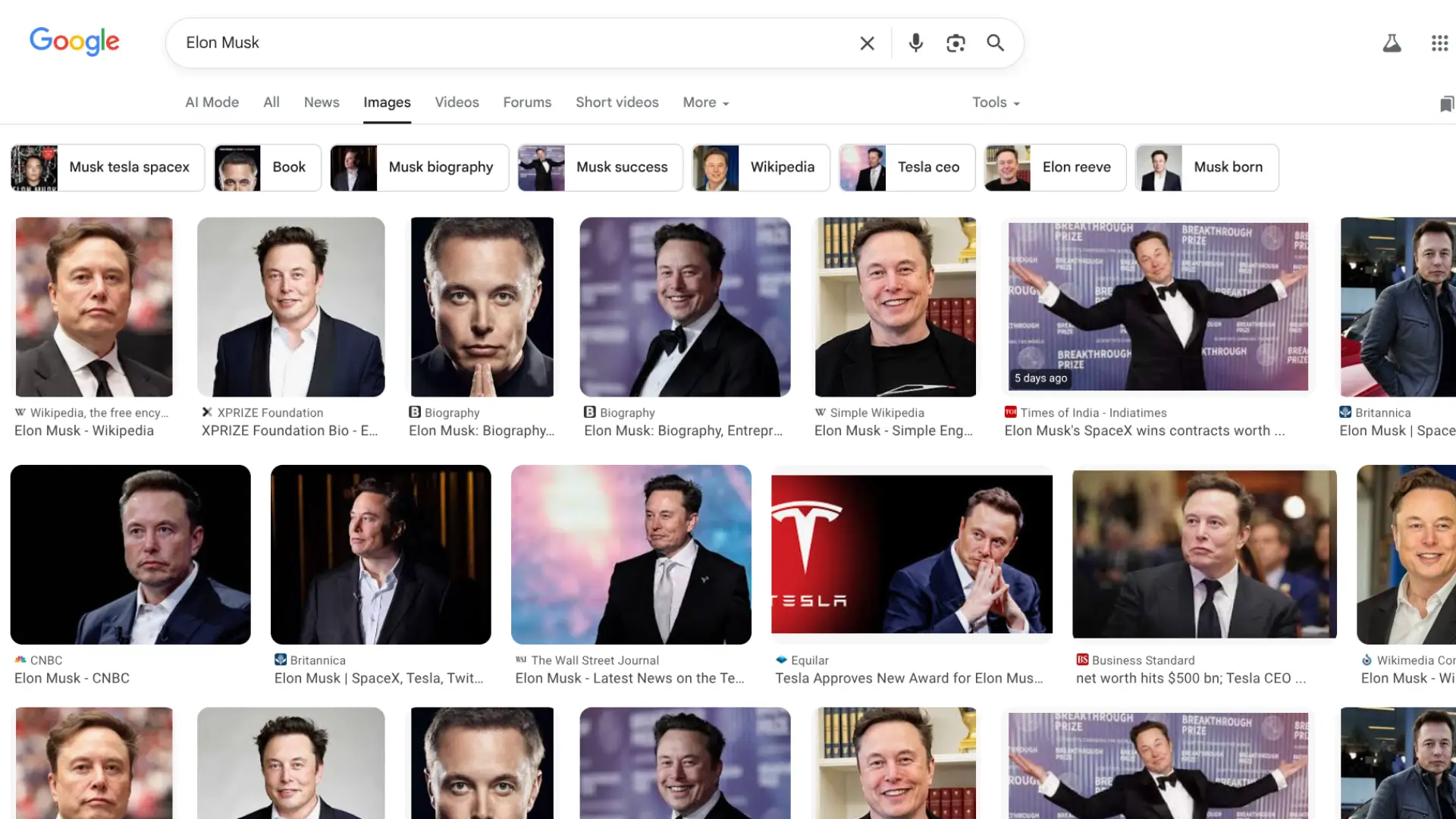
- Keywords: Change completely across languages, "car insurance" becomes "seguro de auto" in Spanish or "自動車保険" in Japanese. You need separate SEO strategies for each language.
- Entities: Remain constant across all languages. Tesla is Tesla worldwide. Both AI and Google knows "埃隆·马斯克" (Chinese) and "Elon Musk" (English) are the same entity. Build entity recognition once, benefit globally.
Confidence and Recognition
- Keywords: Either rank or don't binary outcome based on relevance and competition.
- Entities: Have confidence scores from 0-100%. Microsoft might have 95% entity confidence, while your new startup starts at 20%. Search engines gradually increase confidence as you build citations, get media mentions, and establish a consistent digital presence.
Temporal Nature
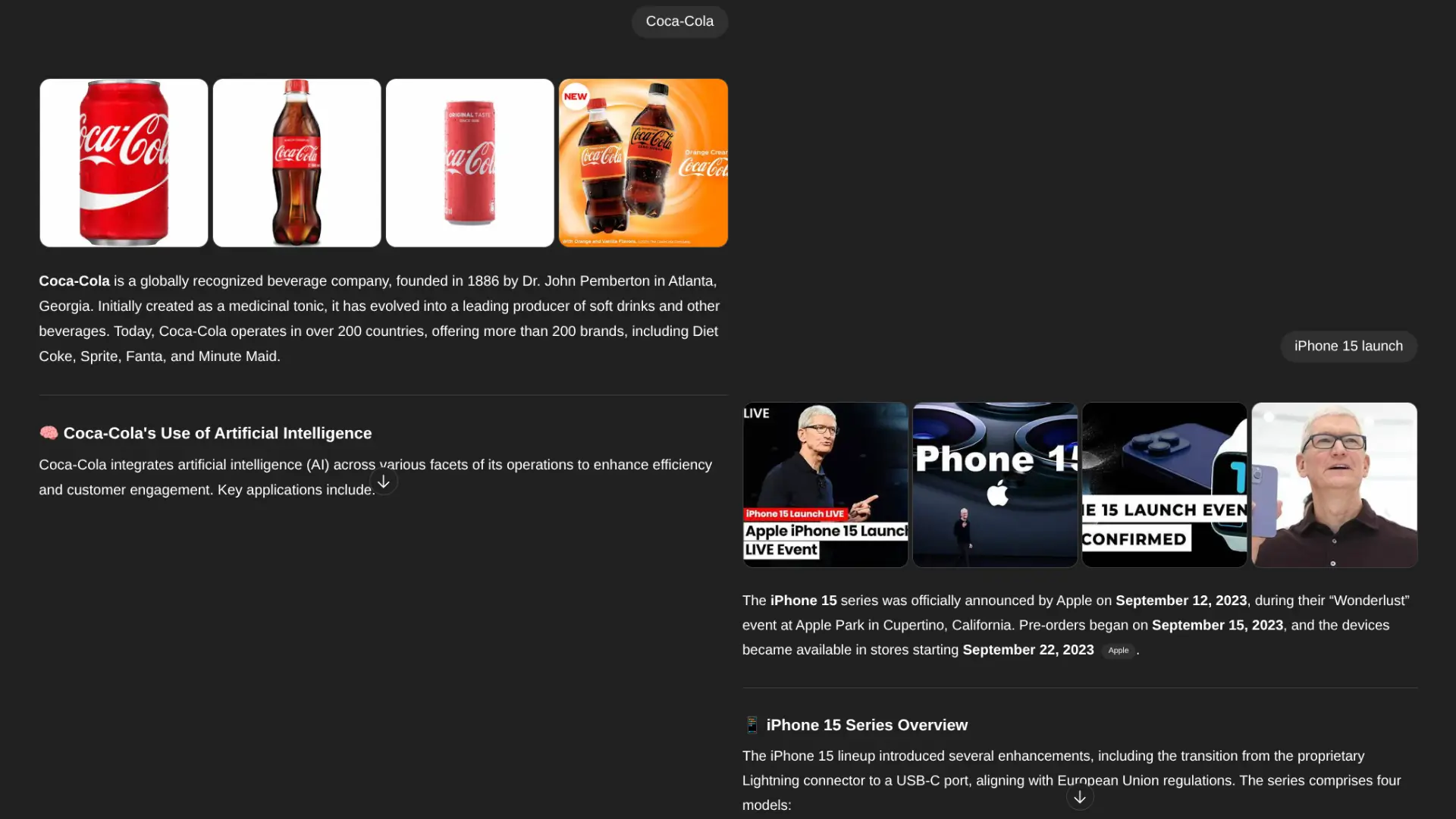
- Keywords: Search volume fluctuates, but keywords themselves don't expire. "Christmas gifts" spike annually, but the keyword always exists.
- Entities: Can be temporary (Olympics 2024, iPhone 15 launch) or permanent (Shakespeare, Coca-Cola). Search engines track entity lifecycles when they're born, become relevant, and sometimes cease to exist.
Contextual Understanding
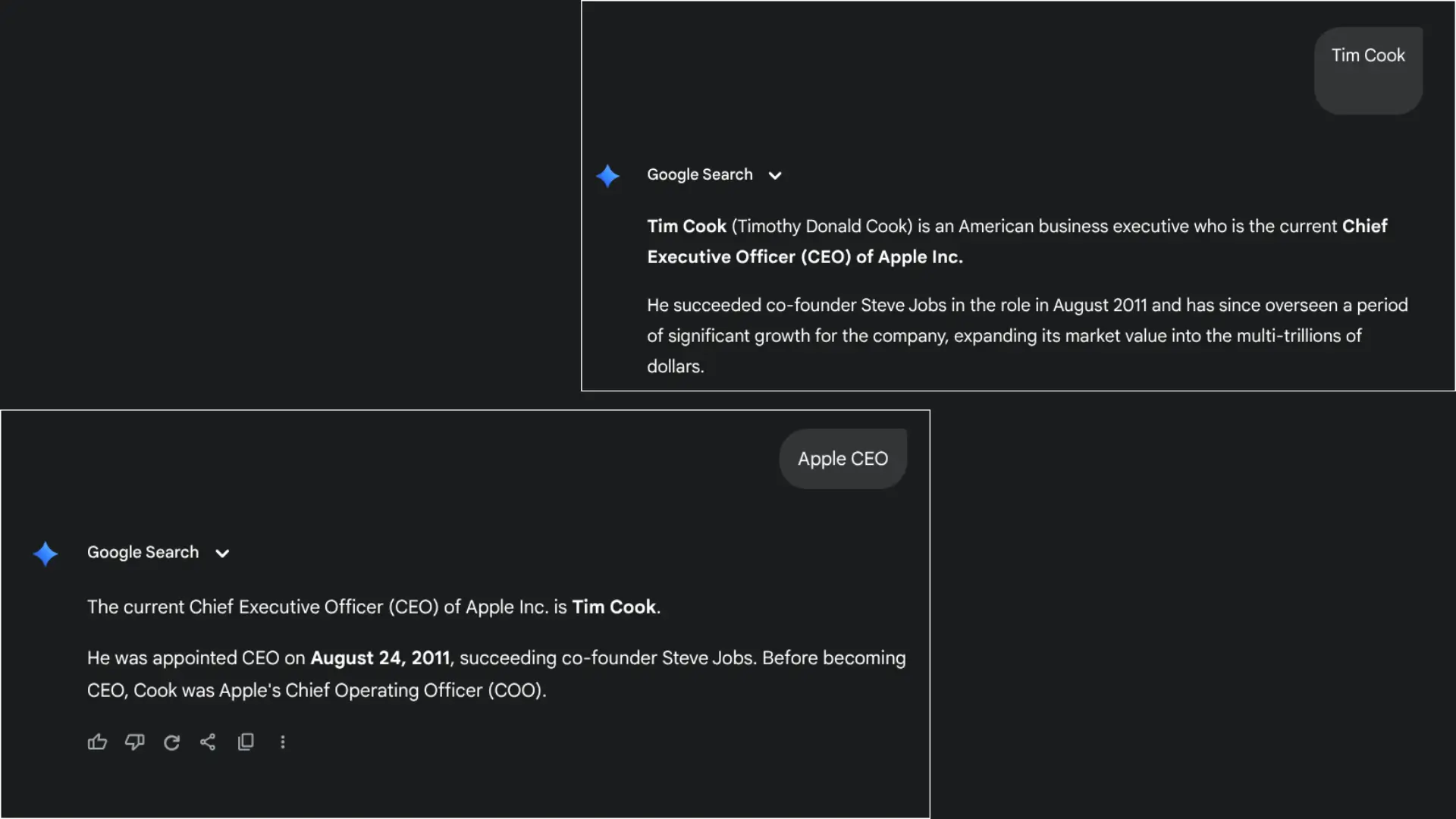
- Keywords: Exist in isolation. "Apple" could mean fruit or a tech company context that comes from surrounding keywords.
- Entities: Build relationships through co-occurrence. When "Tim Cook" frequently appears with "Apple CEO" and "Cupertino," these entity connections teach Google the relationship network, creating context without keyword repetition.
Predictive Capabilities
- Keywords: Only trigger what you explicitly optimize for. Rank for "pizza delivery" and that's all you get.
- Entities: Enable predictive search. Once Google recognizes your restaurant as an entity, it automatically shows hours, reviews, menu, directions, even for queries you never targeted. Entity recognition unlocks features keywords never could.
How Google Understands Entities: The Knowledge Graph & NLP
The Knowledge Graph: Google’s Brain for Entities
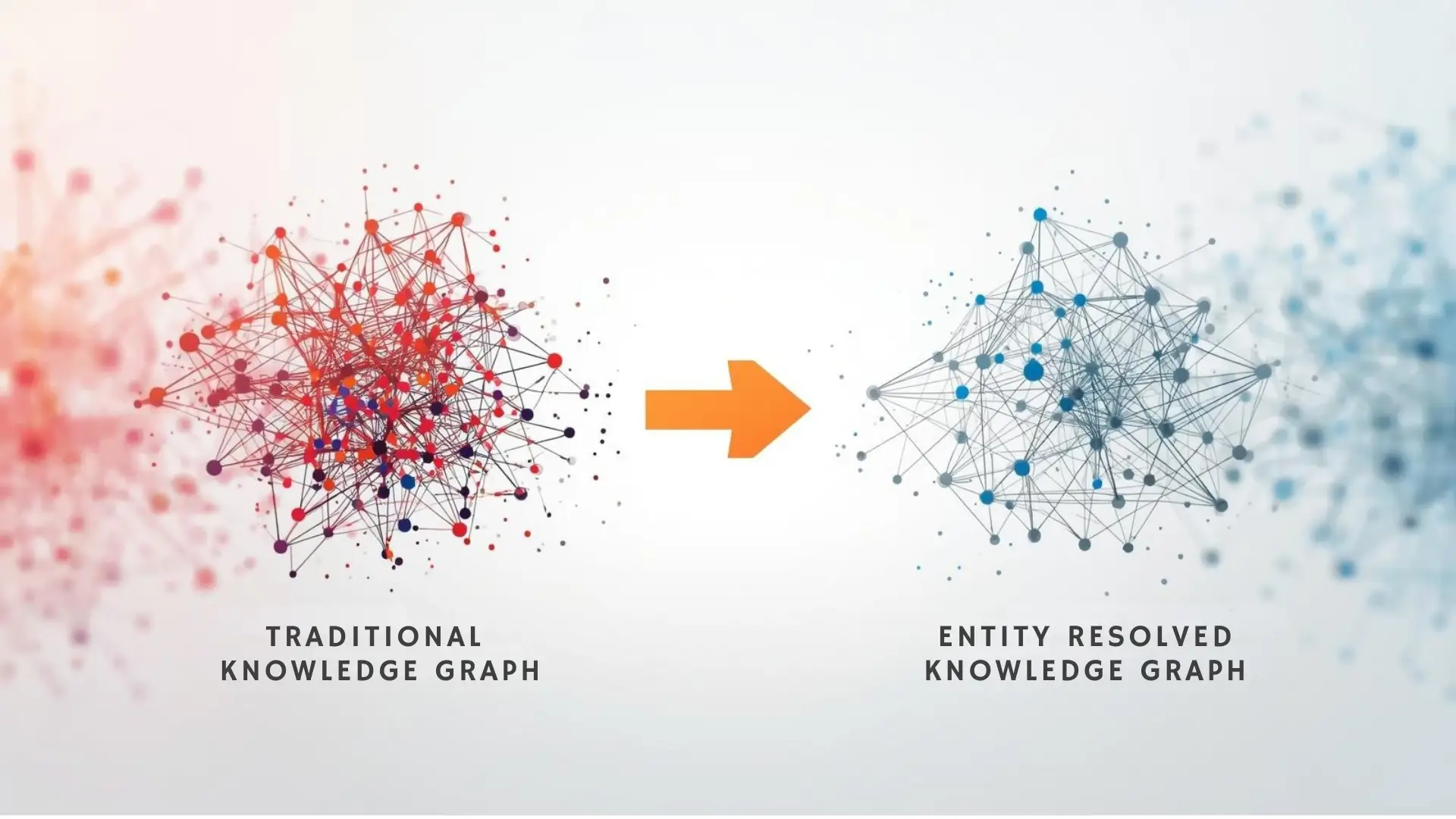
Google’s Knowledge Graph is basically its digital brain. Think of it as a gigantic map that links people, places, and things to each other. Because of this behind-the-scenes tool, we get stuff like:
- Knowledge Panels (those info boxes in search results)
- AI Overviews (direct answers at the top of the search)
- Local Business Listings (Google Business Profiles)
For example, if you type “Leonardo da Vinci” into Google, you don’t just get a list of web pages that mention his name. The search engine grabs the organized info it has about when he was born, what he painted, and which other famous figures were around him.
Natural Language Processing (NLP) & Entity Recognition
Google uses Natural Language Processing (NLP) to:
- Identify entities in text (Named Entity Recognition, or NER)
- Understand relationships between them (via “triples” → subject-predicate-object)
Example:
- “Elon Musk founded Tesla in 2003.”
- Subject: Elon Musk (Person)
- Predicate: founded
- Object: Tesla (Company)
- Attribute: 2003 (Date)
Advanced AI models like BERT and MUM enhance this understanding by analyzing context across multiple languages and media types (text, images, video).
How AI Platforms Actually Use Entities?
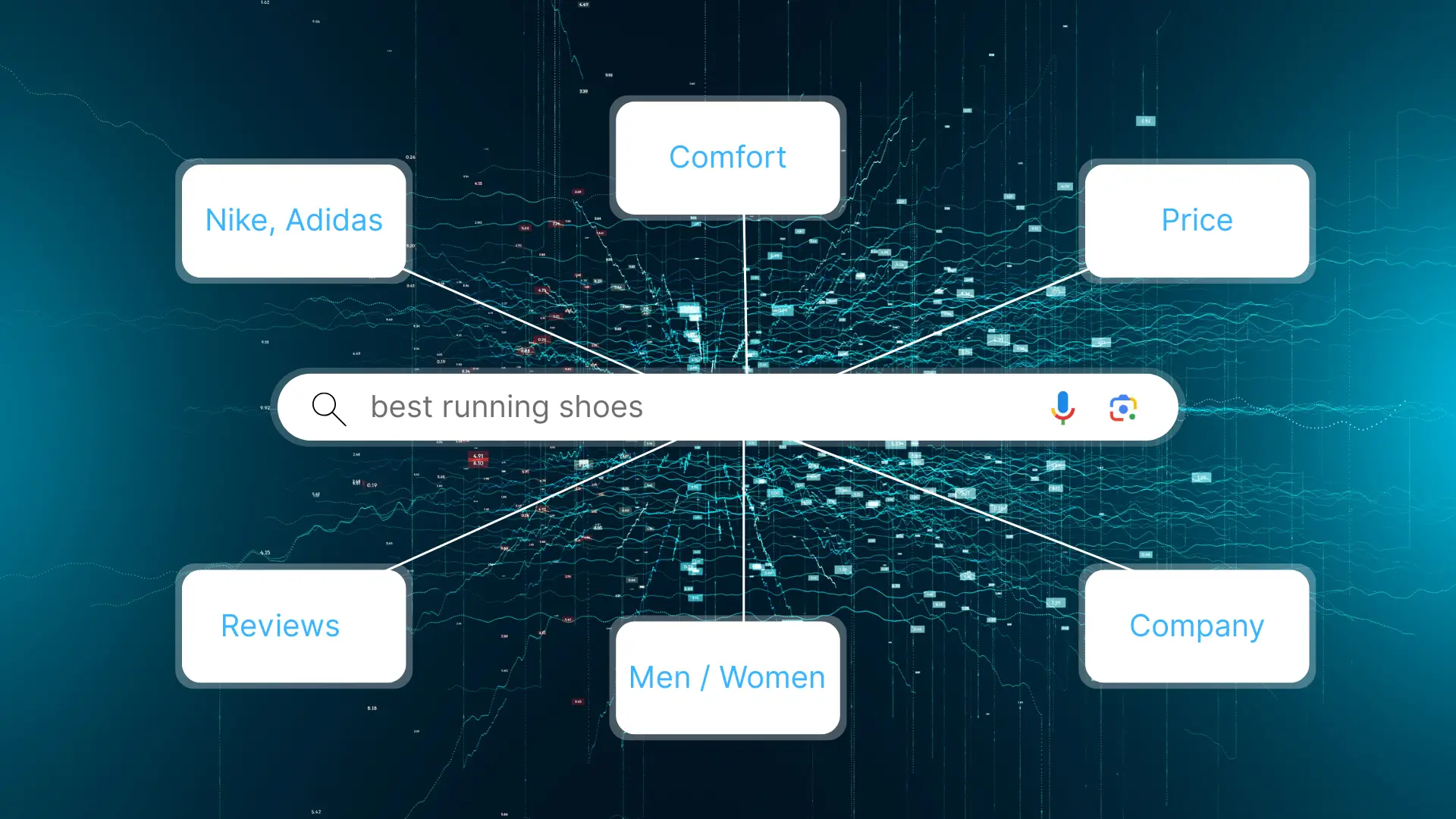
Let’s pull back the curtain on how large AI platforms like ChatGPT, Claude, and Perplexity process a question and why entity optimization is now the real game-changer in AI search visibility.
Query Understanding - The Entity Extraction Layer
When someone types a question like:
“What are the best marketing tools for small businesses?”
The AI doesn’t see just words - it sees entities and their relationships:
- Entity Type: Marketing tools → (Product category)
- Context Entity: Small businesses → (Target audience)
- Intent: Comparison or recommendation requestIntent: Comparison or recommendation request
Behind the scenes, large language models (LLMs) perform a process called semantic parsing, where they break down the query into structured representations that machines understand. This helps the AI “anchor” the query to known entities from its knowledge graph (e.g., Wikipedia, Crunchbase, schema.org, or its internal entity embeddings).
Why this matters: Queries that clearly express relationships between entities (e.g., “AI monitoring tools for enterprises”) trigger better contextual matching than those relying on vague keyword combinations.
Entity Retrieval & Matching - From Keywords to Knowledge Graphs
Once entities are identified, the AI performsentity-based retrieval - not keyword search. This is where embeddings, structured data, and topical vectors come into play.
Instead of looking for exact word matches, the system runs a query fan-out - generating multiple semantic variations of the original query:
- “top marketing software for startups”
- “affordable marketing platforms for SMBs”
- “marketing automation tools under $100/month”
- “best CRM for small business owners”
Each variation targets a different semantic cluster around the main entity. The AI then scans its indexed web corpus, prioritizing:
- Entity-rich, concise pages
- Clear information architecture (headers, bullets, schema)
- Fact-based formatting
My quick tip: Pages written in entity-first structures (product → category → attribute → use case) rank better in AI-driven retrieval systems than those written purely for keyword SEO.
Entity Verification & Authority Scoring - The E-E-A-T Layer
Here’s where the big shift happens: AI doesn’t just find mentions; it validates relationships.
AI models assess entity credibility through multi-dimensional checks:
- Entity Co-occurrence: Are these entities often mentioned together in authoritative contexts?
- Entity Salience: Are the entities clearly defined with attributes, not just listed?
- Authority Scoring: Does this source demonstrate consistent topical authority (E-E-A-T)?
- A Cross-Source Validation: Do other reputable sites confirm these facts?
Platforms like Claude place strong emphasis on methodological transparency and attribution, while ChatGPT leans toward source diversity and factual cross-referencing.
Data point: Entity-based optimization has proven to be 3× more effective than keyword-based SEO in AI-driven search visibility.
Citation Selection - The “Entity Credit” Moment
When AI platforms generate overviews or answers, they select citations that reinforce credibility.
- The average AI Overview cites 13.34 sources, sometimes up to 95.
- Google + AI referenced Reddit (21%) and YouTube (18.8%), whereas Perplexity depended more heavily on Reddit (46.7%).
- ChatGPT, by contrast, favors original research and primary sources, giving domain experts and niche publishers a major visibility advantage.
In short, entity authority drives citation probability. The clearer your entity definitions, schema markup, and contextual relationships, the higher your odds of being cited by AI responses.
Synthesis & Response Generation - The Entity-Driven Answer Engine
Finally, the AI merges verified facts, relationships, and attributions into a coherent, conversational answer that:
- Directly addresses the query intent
- Maintains entity relationships
- Attributes claims to credible sources (when allowed)
- Balances factual precision with natural language fluency
This synthesis process is what makes AI answers feel intelligent, but behind that fluidity lies a deep entity graph reasoning engine that determines what’s included, what’s ignored, and which sources get credited.
How can Entity SEO increase my online revenue?
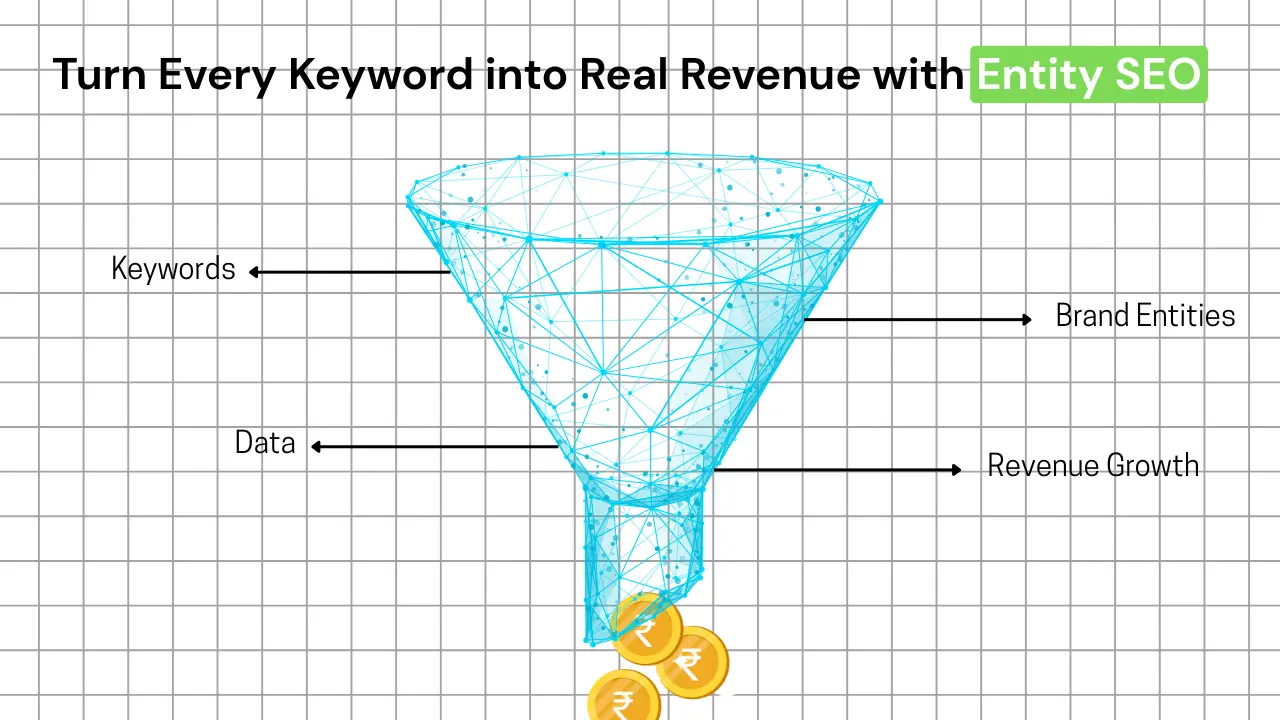
Optimizing your or your client’s website around the entities that AI associates you with might be the most profitable move you make this year. AI is already processing your content through entity recognition as explained above, so aligning your strategy with that system can only amplify your results.
Here’s what most marketers overlook: entity optimization works simultaneously for both Google and AI platforms.
Because both Google and modern AI systems interpret content through entity relationships, one well-executed strategy delivers double the visibility and impact. By defining your entities clearly and building authority around them, you’re positioning your brand to perform better across search results, AI overviews, and generative answers.
Of course, strong SEO fundamentals still matter because AI engines frequently source information fromwell-ranked, authoritative content. Combine solid SEO foundations with entity optimization, and you create a compound advantage that boosts both rankings and revenue potential.
How to do entity optimization for Google?
Discover & verify the target entity
This technique is equally critical for AI. Both search engines and AI platforms need a unified, consistent picture of your brand.
- Check if Google already knows this entity. Use the Google Knowledge Graph Search API (or a simple search for the brand/person) to see whether a Knowledge Graph entry/KG result exists and how Google describes it.
- Look for canonical external IDs: Wikipedia page, Wikidata Q-ID, Crunchbase entry. These are the clearest signals Google uses to “pin” identity. If you have a verified Wikipedia/Wikidata entry, that’s your strongest anchor for entity identity, but note: getting a Wikipedia page requires independent notability.
Build a single canonical entity page on your site
Make one authoritative page that represents the entity (brand/about, product hub, or person page) and treat it as the single “home” for that entity on your domain. This creates semantic clarity, allowing both Google and AI engines to map how your brand, products, and expertise interconnect.
Actionables:
- Use a canonical URL and include rich, unambiguous facts (founding date, headquarters, core products, leadership, awards, short bios).
- Add <link rel="canonical"> and ensure the page isn’t blocked by robots ornoindex.
- Add structured data (Organization, LocalBusiness, Person, Product, whichever fits) and an @id for the entity (see JSON-LD sample below).
Add machine-readable identity signals (JSON-LD + sameAs)
Why: structured data and “sameAs” help search engines unambiguously link the website entity to external profiles (Wikipedia, Wikidata, Crunchbase, social profiles). Structured data feeds the knowledge graphs that both Google and AI rely on to verify and retrieve facts.
Do this:
- Use JSON-LD (Google recommends JSON-LD where possible). Include name, url, logo, address (for LocalBusiness), and sameAs pointing to authoritative profiles (Wikipedia/Wikidata/socials).
Example (Organization / LocalBusiness minimal template - edit values):
<script type="application/ld+json">
{
"@context": "https://schema.org",
"@type": "Organization",
"@id": "https://example.com/#org",
"name": "Example Co",
"url": "https://example.com",
"logo": "https://example.com/logo.png",
"sameAs": [
"https://en.wikipedia.org/wiki/Example_Co",
"https://www.wikidata.org/wiki/Q1234567",
"https://www.linkedin.com/company/example-co"
],
"contactPoint": [{
"@type": "ContactPoint",
"telephone": "+1-555-555-5555",
"contactType": "customer service"
}]
}
</script>(Place the JSON-LD in the HTML served to Googlebot, not injected client-side.)
Expand with topic clusters (breadth + depth)
Goal: show both breadth (related concepts) and depth (authoritative detail) around your 2–3 primary entities. Clear entity definitions make your content machine-interpretable and more likely to be cited or summarized by AI tools.
How to execute:
- Pick your 2–3 core entities that represent the site’s purpose.
- Map cluster content for each entity: definition, attributes, comparisons, use-cases, case studies, FAQs, data tables, and how-to guides. This is the “entity network” that proves topical authority.
Content tips:
- Each cluster page should clearly reference the canonical entity page (internal links), and include structured data relevant to that page’s type (e.g., Product, Article, FAQPage).
- Include original data or research where possible; primary sources increase citation probability.
Entity-first internal linking (prevent cannibalization)
Follow the exact process you already outlined, but tighten it into an operational checklist:
- Choose one entity-focused hub page per entity (no duplicates).
- Find mentions across the site (site:example.com "Entity Name") and turn natural mentions into links pointing to the hub.
- Use natural anchor text, including synonyms and related phrases, not only the exact brand string.
- Keep the hub page as the top authoritative page for that entity (no competing, identical targeting pages).
This signals a clean graph of internal entity relationships that Google can reason over.
Build external authority and co-occurrence signals
Google’s entity graph is built from many sources. Increase off-site signals that tie your entity to the real world. AI models favor information embedded within trusted knowledge networks. The stronger your connections, the higher your chances of being surfaced, cited, or recommended.
- Claim and complete your Google Business Profile (for local entities/shops) and verify ownership. This feeds Maps, Knowledge Panel details, and local signals.
- Register or complete profiles on Crunchbase, LinkedIn company page, industry directories, trade bodies, and include consistent NAP (name, address, phone) and links back to your canonical page.
- Where possible, get cited by authoritative third-party pages, especially ones that themselves have clear entity signals (Wikipedia, major publishers). Search panels and knowledge panels often pull from these sources.
Claim & manage the Knowledge Panel (if one appears)
If Google shows a Knowledge Panel for your brand/person, claim it and verify to suggest authoritative edits. Also, keep your Google Business Profile and official site info synchronized. Google’s docs explain how Business Profile and site signals affect panels.
Monitor, test, iterate (KPIs & tools)
What to watch:
- Knowledge Graph Search API results for your entity to track how Google describes you.
- Search Console for coverage & rich result reports.
- Rich Results Test to validate structured data; fix errors to keep eligibility for rich features.
Quick implementation checklist
- Confirm whether a KG entry exists (Knowledge Graph Search API).
- Create one canonical entity hub page and mark it canonical.
- Implement JSON-LD Organization/LocalBusiness/Person with @id + sameAs (Wikidata/Wikipedia/socials).
- Ensure structured data is rendered server-side and passes the Rich Results Test.
- Build 2–3 topic clusters around primary entities and interlink to the hub.
- Complete and verify Google Business Profile (if relevant)
- Track KG description changes via API and Search Console.
Common pitfalls to avoid
- Duplicate entity pages (internal cannibalization) keep one canonical hub per entity.
- Broken or conflicting sameAs URLs must be crawlable and correct. (Schema.org defines sameAs as URLs that “unambiguously indicate the item’s identity”.)
- Client-side only JSON-LD (rendered by JS). Google recommends that markup be present in HTML served to the crawler.
How to do entity optimization for AI search engines?
AI systems don’t crawl the web like Google does, but they pull from search engine indexes and APIs, meaning your visibility in AI results still depends on how well your entities are defined, structured, and connected across the web.
AI systems don’t crawl the web like Google does, but they pull from search engine indexes and APIs, meaning your visibility in AI results still depends on how well your entities are defined, structured, and connected across the web.
Here are the 7 essential actions you must take today to future-proof your brand and ensure it’s cited, trusted, and understood by the AI layer.
Feed the AI’s “Truth Repositories”
AI models don’t trust your website's claims alone. They cross-verify information through structured sources, think of them as digital fact-checkers. Wikidata, Crunchbase, LinkedIn, Product Hunt, and GitHub are the "truth repositories" that AI systems prioritize to confirm facts before citing them.
- Achieve Entity Consistency: Maintain identical names, URLs, and descriptions across all structured sources. A single discrepancy can confuse the AI.
- Fill Every Field: Don't leave blanks. Fill in the founder, launch year, industry, tagline, and mission. Every field is a data point that the AI can extract.
- Link with Precision: Ensure your official website and social profiles are directly linked from these listings.
When an AI needs to confirm a fact, it prioritizes brands listed in these verified databases. Consistent presence across multiple trusted sources makes your brand far more likely to be cited as an authoritative source in AI-generated answers and summaries.
Optimize for Conversational Prompts, Not Keywords
Traditional SEO asked: How do I rank for "best AI Visibility"?
AI search asks: What are the best tools to monitor AI visibility?
People don't use single keywords with AI; they ask full, conversational questions. Your content must be structured to answer them directly.
- Adopt Q&A Formats: Structure your content to anticipate the exact questions users might ask an AI. Use clear subheadings like: What is [Brand Name]? or How does [Product] work?
- Use Conversational Signatures: Write as an AI would cite you: "According to [Brand Name],..." or "As explained by [Expert Name]..."
- Write Quote-Worthy Sentences: Craft short, factual, declarative sentences an AI can lift directly and quote.
Large Language Models (LLMs) are trained to identify content that looks and sounds like an answer. If your content directly matches the structure of conversational prompts, AI tools are exponentially more likely to pull, cite, and summarize your response.
Use Machine-Readable Factual Statements
AI models don't read the nuance of your beautifully written prose; they parse content semantically. They prefer clean, declarative sentences that explicitly state a fact.
- Keep it Simple and Verifiable: Include simple, explicit statements like:
- "GetCito is an AI visibility platform launched in 2025 by Avinash Tripathi."
- "Fusion Labs develops tools that improve AI search and entity visibility for B2B brands."
- Avoid Ambiguity: Don't bury context in long paragraphs. Use bullet points and clear, short sentences.
Every explicit factual sentence becomes a data point the AI can extract, embed, and permanently associate with your entity. Unlike a Google snippet, an AI summary demands this kind of structured clarity ambiguity or buried context reduces your discoverability to zero.
Publish Where the AI Spends Its Time
Most AI systems are primarily trained on, and retrieve from, publicly accessible, high-authority sources that act as content hubs Substack, Medium, Quora, Reddit, and GitHub.
Your brand may be mentioned there already, but likely without your control. You need to control the narrative in these environments.
- Strategic Repurposing: Repurpose key research, articles, or thought pieces into LinkedIn Articles or a Substack post.
- Intentional Engagement: Engage in relevant Reddit or Quora discussions, linking back to your original research or tools.
- Embed Entity References: Ensure every version of the content clearly references your main website and core entity name.
AI models often "see" and memorize content from these high-authority hubs first. Publishing strategically across AI-scraped platforms ensures your brand is included in the foundational training data or the retrieval layer used by many generative engines.
Embed Structured Context in Multimodal Assets
Generative models like ChatGPT and Gemini are becoming sensitive to authorship verification and provenance. They are more likely to cite content from sources with clear, verified human authorship.
- Metadata Reinforcement: Add robust EXIF or alt-text metadata that explicitly includes your full entity name.
- Clear Captioning: Caption every visual with clear identifiers: "Entity SEO Framework by Fusion Labs."
AI vision models use metadata to associate images with brands. If your brand is explicitly visible in both the text and the image data, you double your presence in multimodal AI outputs (e.g., an AI answering with a cited quote and a relevant image).
Add AI-Visible Source Signatures (Build Digital Trust)
The future of AI is multimodal, blending text, images, and metadata. If you publish any visuals (infographics, videos, or screenshots), their metadata must reinforce your entities.
- Metadata Reinforcement: Add robust EXIF oralt-text metadata that explicitly includes your full entity name.
- Clear Captioning: Caption every visual with clear identifiers: "Entity SEO Framework by Fusion Labs."
AI vision models use metadata to associate images with brands. If your brand is explicitly visible in both the text and the image data, you double your presence in multimodal AI outputs (e.g., an AI answering with a cited quote and a relevant image).
Add AI-Visible Source Signatures (Build Digital Trust)
Generative models like ChatGPT and Gemini are becoming sensitive to authorship verification and provenance. They are more likely to cite content from sources with clear, verified human authorship.
- Implement Author Schema: Add proper author schema with verified social links (Twitter, LinkedIn, Google Scholar).
- Include Credentials: Implement robust "About the Author" sections with credentials, expertise, and links to published works.
- Explore Verification: Look into emerging standards for digital content signatures (like C2PA) to signal content authenticity.
This builds digital trust. AI tools recognize these provenance signals and weigh your content higher in reliability boosting your chance of being quoted verbatim as an authoritative source.
Track AI Mentions and Summaries
AI visibility isn’t about checking your Google ranking; it's about checking your representation. You need to know how AI tools describe your brand, not just if they mention you.
- Test Key Prompts: Periodically test prompts like “What is [Brand Name]?” or “Top AI visibility platforms.”
- Monitor Narratives: Use tools (or simple testing) to monitor how LLMs cite or describe your brand's mission, products, and founders.
- Refine and Update: Update your entity data and content accordingly if you find the AI misrepresenting your brand.
AI models don't "index" like Google; they "recall" from their learned knowledge. By actively tracking these mentions, you ensure your brand narrative remains accurate, authoritative, and up-to-date in the generative ecosystem.
Conclusion
Over the last year, we’ve been running these AI-focused Entity SEO frameworks on our own brand and for a bunch of clients right there, in the trenches, dealing with the same challenges every business faces.
The most exciting part? The impact hit within few months. We saw a real jump: AI citations went up, branded mentions started popping up in generative answers, and we began seeing traffic growth from places like Perplexity and ChatGPT Browse.
If you want to know how the AI systems 'see' your brand, tools like Entity SEO: "How can I prove GetCito, formerly “AI Monitor” is a are key. They give you the real-time proof of where your entities are appearing and how they’re being talked about.
These aren't just big ideas; they're fully tested frameworksthat actually bridge the gap between traditional Google SEO and this massive, new AI layer of visibility. When you use them consistently, you're not just hoping to be found, you're positioning your brand to be trusted, cited, and referenced across the entire AI-driven landscape."
